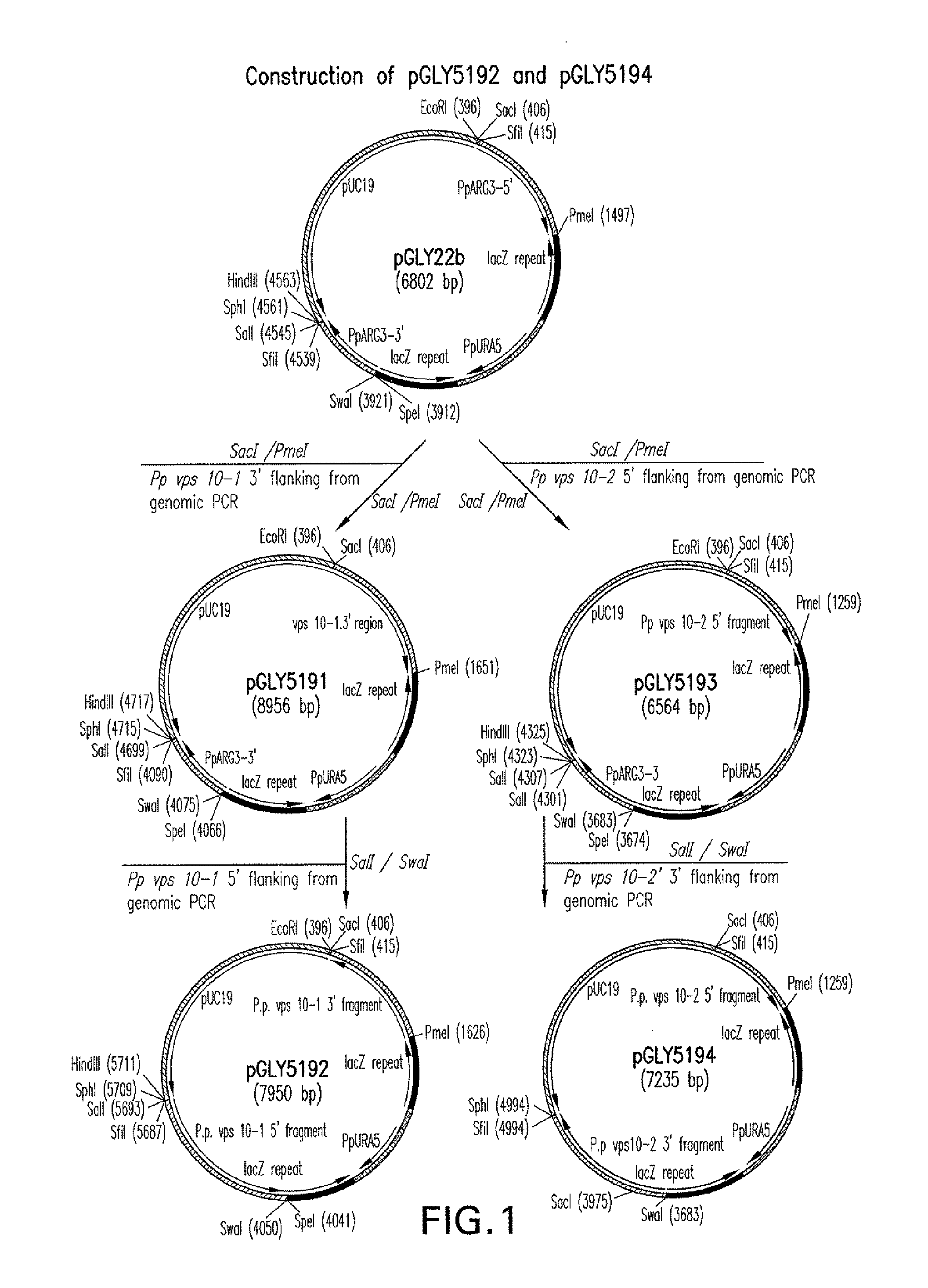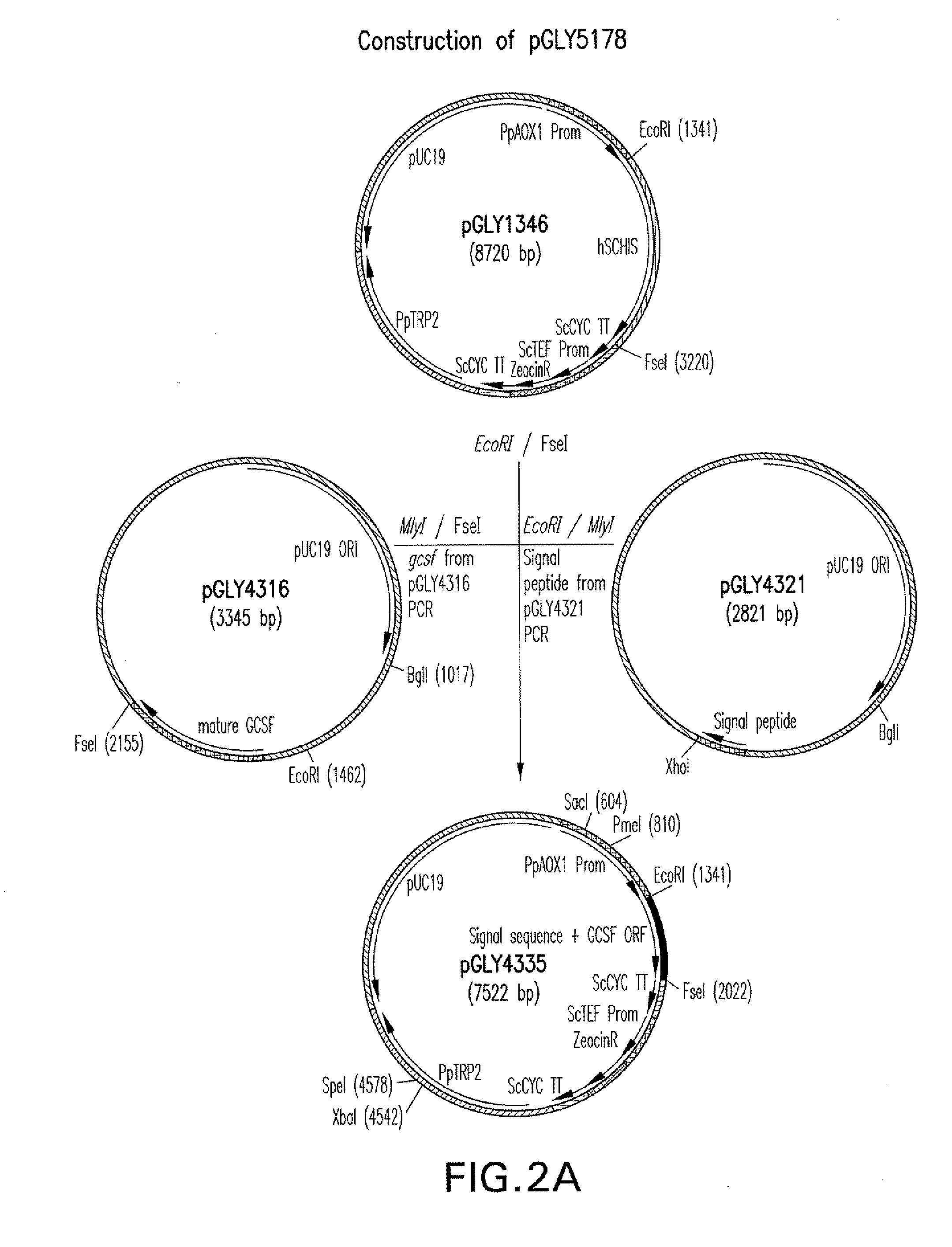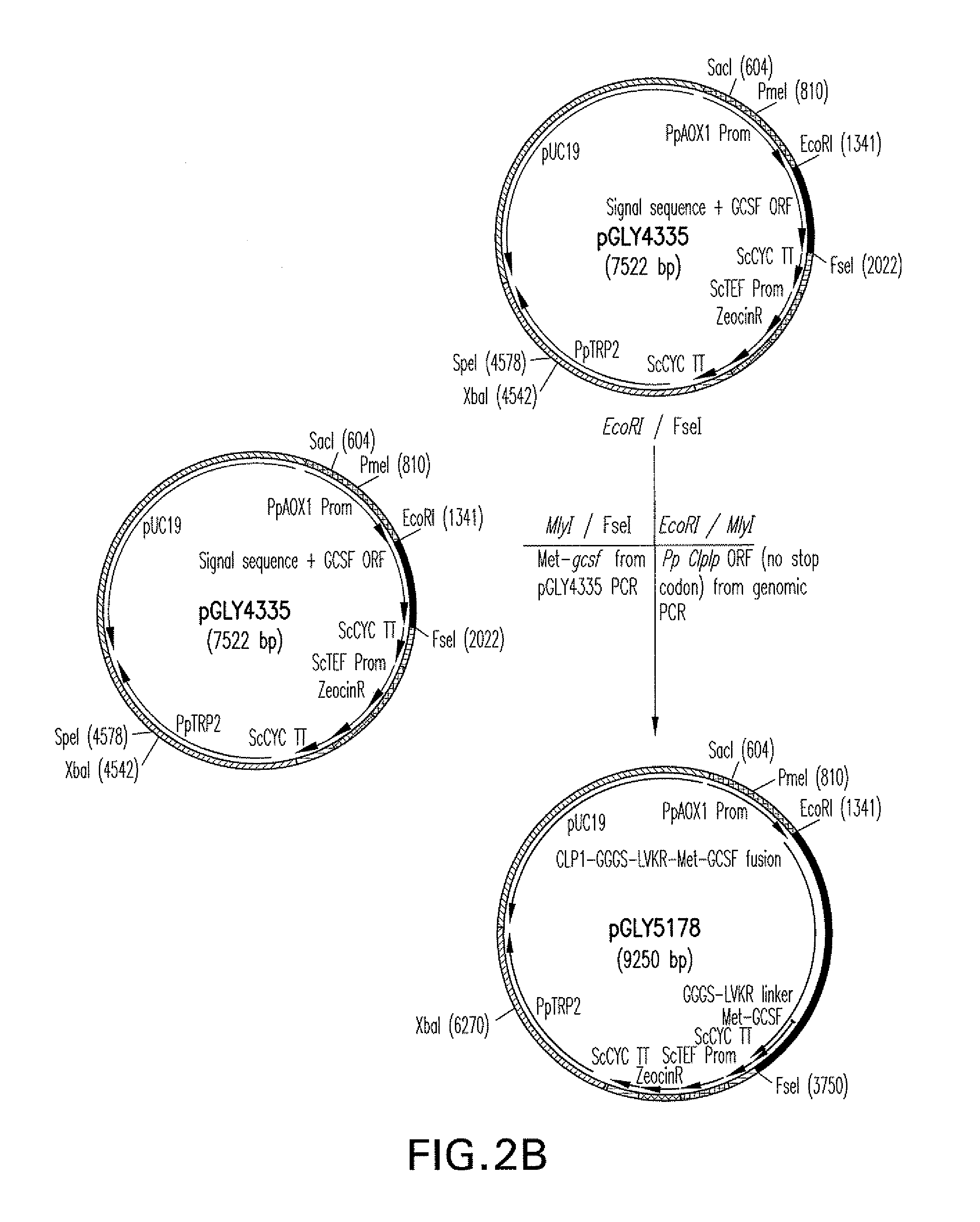Methods for the production of recombinant proteins with improved secretion efficiencies
- Summary
- Abstract
- Description
- Claims
- Application Information
AI Technical Summary
Benefits of technology
Problems solved by technology
Method used
Image
Examples
example 1
Strains and Media.
[0133]K coli strain TOP10 was used for recombinant DNA work. All primers and plasmids and selected Pichia pastoris strains used in this study are listed in FIGS. 10 and 11. Protein expression was carried out with buffered glycerol-complex medium (BMGY) and buffered methanol-complex medium (BMMY). BMGY medium consisted of 2% martone, 100 mM potassium phosphate buffer at pH 6.0, 1.34% yeast nitrogen base, 0.00002% biotin, and 2% glycerol as a growth medium. BMMY contained the same components as BMGY, except 1% methanol was used as an induction medium instead of glycerol. YMD medium consisted of 2% martone, 2% dextrose and 2% agar and was used to grow Pichia pastoris strains on agar plates. Restriction and modification enzymes were purchased from New England BioLabs (Beverly, Mass.). Oligonucleotides were obtained from Integrated DNA Technologies (Coralville, Iowa). Salts and buffering agents were obtained from Sigma (St. Louis, Mo.).
example 2
Transformation of Yeast Strains.
[0134]Yeast transformations with expression / integration vectors were as discussed, infra (Cregg et al., Mol. Biotechnol. 16: 23-52 (2000)). Pichia pastoris strains were grown in 50 mL YMD media overnight to an OD ranging from 0.2 to 6.0. After incubation on ice for 30 minutes, cells were pelleted by centrifugation at 2500-3000 rpm for 5 minutes. The media was removed and the cells were washed three times with ice cold sterile 1M sorbitol. The cell pellet was then resuspended in 0.5 ml ice cold sterile 1M sorbitol. Ten 4 linearized DNA (1-10 μg) and 100 μL cell suspension were combined in an electroporation cuvette and incubated for 5 minutes on ice. Electroporation was performed using a Bio-Rad GenePulser Xcell (Bio-Rad Laboratories, Hercules, Calif.), following a preset Pichia pastoris protocol (2 kV, 25 μF, 200Ω). Immediately following electroporation, 1 mL YMDS recovery media (YMD media plus 1 M sorbitol) was added to the mixture. The transformed c...
example 3
[0135]Identification of Vps10 Homologs in P. pastoris.
[0136]Protein sequences of the four Vps10 homologs (Vps10p / Pep1p / Vpt1p (SEQ ID NO:22), Vth1p (SEQ ID NO:23), Vth2p (SEQ ID NO:24), and YNR065c (SEQ ID NO:25)) in S. cerevisiae were obtained from Genbank®. As discussed in Example 14, potential VPS10 gene homologs were identified in Pichia pastoris using the four S. cerevisiae proteins (above) in a TBLASTN computational search (Altschul et al., J. Mol. Biol. 215(3): 403-10 (1990); Altschul et al., Nucleic Acids Res. 25:3389-3402 (1997)) of a proprietary Pichia pastoris genome. Two Pichia gene homologs, named VPS10-1 and VPS10-2, were identified. Genomic DNA sequences for VPS10-1 (SEQ ID NO:14) and VPS10-2 (SEQ ID NO:15) are provided in FIGS. 13 and 14, respectively. Translated protein sequences for Vps10-1p (SEQ ID NO:20) and Vps10-2p (SEQ ID NO:21) are provided in FIGS. 15 and 16, respectively. A comparison of the amino acid sequences of the P. pastoris Vps10p homologs to S. cere...
PUM
| Property | Measurement | Unit |
|---|---|---|
| Angle | aaaaa | aaaaa |
Abstract
Description
Claims
Application Information
 Login to View More
Login to View More - R&D
- Intellectual Property
- Life Sciences
- Materials
- Tech Scout
- Unparalleled Data Quality
- Higher Quality Content
- 60% Fewer Hallucinations
Browse by: Latest US Patents, China's latest patents, Technical Efficacy Thesaurus, Application Domain, Technology Topic, Popular Technical Reports.
© 2025 PatSnap. All rights reserved.Legal|Privacy policy|Modern Slavery Act Transparency Statement|Sitemap|About US| Contact US: help@patsnap.com



